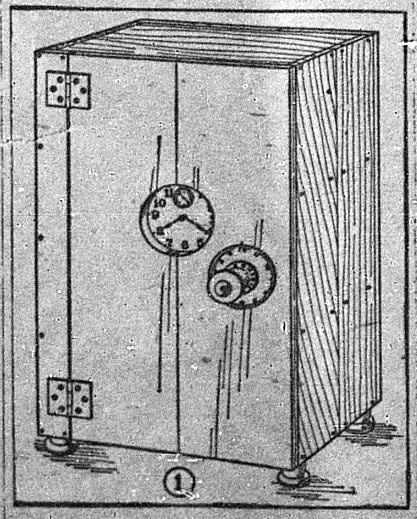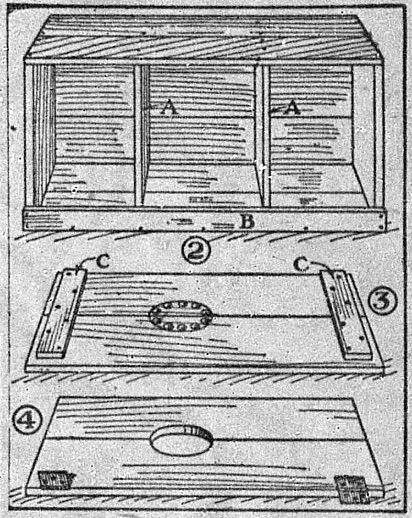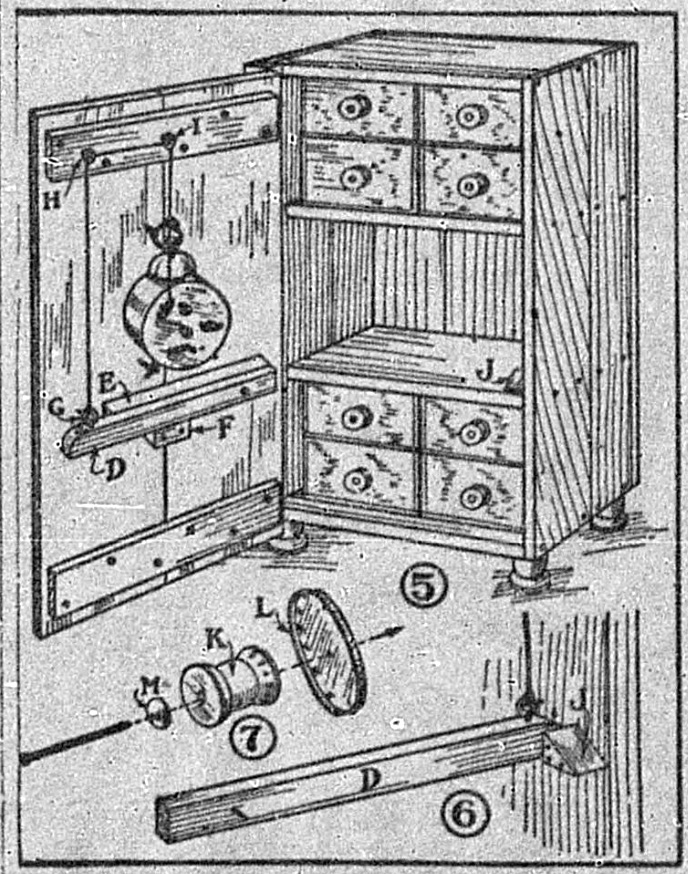
Have you ever wanted to know how to make a homemade safe? The instructions below were originally published in a newspaper back in 1916.

A Homemade Safe With A Time Lock
All of you boys will want to make this unique safe for your bedroom.
An ordinary alarm clock is required for a lock.
Let the dimensions of the safe be determined by the size of box which you can make. Fig. 5 shows the interior, with shelves spaced at the right distances apart to allow for four tiers of boxes. Cigar boxes with spool knobs are excellent for these boxes. Fasten the shelves as shown at A, Fig. 2.

Nail a strip about an inch and one-half wide to one edge of the box, for a hinge-strip (B, Fig. 2.) Then make a door out of the box-cover boards, fastening these together with battens (C, Fig. 3). Locate the opening for the clock face in the center of the width of the door, and several inches above the center of the height. Make it a trifle smaller than the clock case, so that case will set over it as shown in Fig. 5. Fig. 3 suggests how to make the hole by first boring a number of holes and then cutting out the wood between with a small saw or chisel. Hinge the door as shown in Figs. 1 and 4.
Now for the time lock. Fasten the clock back of the opening with a staple driven over the top ring and another over each foot (Fig. 5). Then cut latch D (Figs. 5 and 6) several inches shorter than the width of the door, and cut crosspiece E several inches shorter than D. Nail crosspiece E to the door an inch and one-half below the clock, pivot latch D to it with a screw, and nail block F to the door just below E for a stop for the latch. Screw a screw-eye into the latch at G, and two others into the door at H and I; then tie a latch-string to screw-eye G, run it up to and through screw eyes H and I, and down to the alarm winding key of the clock. Pull the string taut, and, after winding the alarm, tie the string to the key. Now, when the alarm goes off and the key reverses, the string will wind about and raise the latch. There must be a catch J (Figs. 5 and 6) for the latch to drop behind.

The combination shown in Fig. 1 is make believe. The knob is a spool (K, Fig. 7), the large dial is the top of a syrup can, and the two are pivoted to the safe door with a nail. A button mold (M, Fig. 7) may be used to keep the spool from pulling off of the nail.
Four spool feet fastened with nails to the safe bottom, and a couple of coats of black paint, will complete the safe.
By setting the alarm hand twice a day, you may have the safe open each morning when you arise, and each night at bedtime.
Source: Turner County herald. (Hurley, Dakota [S.D.]), 27 April 1916.

